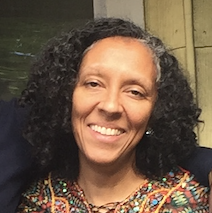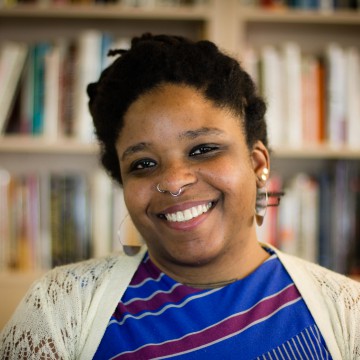Posted in Inspiration
September 28, 2018
At IISC, we are using guided meditations to spark transformation in the hearts and minds of participants in our facilitation and training rooms.
This is one I offered to thirty Black leaders brought together by the Department of Health and Mental Hygiene in New York City this summer. They were asked by First Lady Chirlane McCray, wife of NYC Mayor Bill de Blasio, to develop recommendations to increase the numbers of Black mental health providers. But our job in the end was so much more. It was helping them to discover ways to re-imagine mental health care for Black communities, and to encourage Black people to go into mental health fields to free Black people from the emotional and spiritual binds of pain rooted in systemic and historical injustice.
It was the deepest honor to create and share this meditation with the group as I lost my mother in 2002 to mental illness and the health care system that “treated her”.
Get comfortable
Anchor your feet and back
Breathe natural breaths at your own pace
See what’s on your mind about today
See your obligations outside of this room and let them float past you and away
Call on your images of your ancestors
See the faces of your family
Present
And Past
Think about the history of Black people
What images do you see of pain?
Of pain as they face hardship? As their mental health deteriorates?
Of triumph?
As they triumph over, and their mental health improves and sets them free?
What supports did they have to help them heal and achieve wholeness?
Who helped them?
How?
Who helped you in times of need? In times of mental burden and stress?
How?
Thank your ancestors
Thank yourself
Breathe once again those breaths of life
And come back when you are ready
April 16, 2018
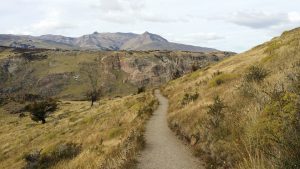
At Passover, there is a song about being thankful for each thing we are blessed with. Dayenu means “it would have been enough.” It is a call to appreciate the small things and to recognize that they are enough. And yet, within the “enough” there is a simultaneous recognition that the first gift or step is not enough without the next one.
In a world where racism is rampant, and where the impacts are real – often deadly, even – is there an “enough” in terms of being collaborators for change? It feels like it is never enough when lives are at stake.
On the one hand, there is never enough until we have envisioned and called into being the liberated and equitable and pleasing community that allows us all to thrive. This reality requires a commitment that is bone deep. It is the kind of commitment that requires constant thinking and action to live into new ways. It is held knowing that upending racism and racist systems is something to die for.
On the other hand, each action, each change to the individual and to the system, needs to be celebrated. For that one moment, it is enough. As long as we know that a new moment emerges when more is needed, and the past action is certainly no longer enough.
What is the first step and what is the next one? For many white people striving to be collaborators, the work begins with learning and knowing and then shifting awareness, then teaching, then ultimately embodied anti-racism practice in relationship with other white people and people of color. Perhaps a move from external to internal; from pointing out the faults of others to seeing how, despite best intentions, we are each implicated in racist systems; from tight vigilance to looser living and correcting.
- Reading books and learning by black artists and intellectuals who have created parts of the world we want Dayenu
- Understanding the history of racism and how it got institutionalized in the US and globally Dayenu
- Bringing a new consciousness to my actions as I walk through the world Dayenu
- Naming racism in all-white spaces Dayenu
- Building authentic relationship across difference Dayenu
- Helping other white people along the journey through openness and kindness Dayenu
- Showing up as a vulnerable person who can acknowledge my mistakes and own my racism Dayenu
- Ongoing learning through books, workshops, conversation, community Dayenu
- Contributing to and investing in multi-racial community at work and at home Dayenu
- Putting my life on the line Dayenu
The work of a white ally or accomplice is never ending, to be sure. It requires a lot of effort. And yet, it should not be a slog. We are doing this for ourselves as much as for anyone else. We recognize that ending white privilege and white supremacy allows us to be full human beings as we disrupt the notion of superiority on which this country was founded.
In my work in trainings and coaching, I encourage both the ongoing effort and the need to celebrate.
Maybe this is one way to be gentle and joyful in our work for liberation – to celebrate each small step as if it were enough while also knowing that it is never enough until we are all free and that we need to want and to create more.
What does it mean to you to do equity work with both insistence and gentleness, step by step?
“Ours is not the task of fixing the entire world all at once, but of stretching out to mend the part of the world that is within our reach… What is needed for dramatic change is an accumulation of acts, adding, adding to, adding more, continuing.” – Clarissa Pinkola Estes
April 13, 2018
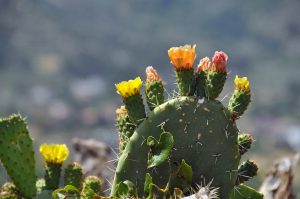
Everything grows.
Everything changes.
And you will be undone forever.
Pursuing racial equity and systems change is a forever equation. I am noticing that our clients and friends believe that if we just implement racial equity, diversity, and inclusion “the right way,” our organizations, movements, and networks will immediately become effective multiracial ecosystems that produce transformative results.
We will always be undone. People and systems – the very world we live in – are ever changing and reverting and that’s why I have to be honest that the work of racial equity will always be unfinished.
People are always coming in and out of our organizations, some with knowledge of our path to create racial justice and others completely unknowing and beginning the discovery of systemic racism. Even if we root out systems of injustice and racism in specific institutions or sectors, they will exist in other places and invariably slip back into our ecosystem. The world is encased in racial stratification. We can dismantle racism in one territory and it can spread elsewhere as people and their ideas travel.
Oppression cannot be fixed. It’s not a linear proposition. It swarms, grows, gets attacked at moments, dissipates, and then finds its way back into our systems as fearful ways of thinking and unproductive ways of doing. And because we are a species and planet dependent on each other, the chronic patterns of racism can reenter our minds and societies. We are imperfect people in deeply imperfect systems.
We are making progress but it’s not the kind where there’s a clear end in sight. We’re learning together. We’re trying new practices of shared power. We’re rooting out racist policies in our laws and organizations. Our systems are feeling the pressure because of our joint actions.
But we won’t do it “right” and we won’t get it “right.” We will be undone.
But don’t let this disappointment get in the way of persistent bold action.
We will have moments of clarity. Moments of seeing new possibilities. Months of progress in our leadership for equity and justice. Years of growth and learning. Examples of power shifting and sharing all around us. Detrimental laws defeated. It will feel like freedom, like less damage is around and inside of us.
Let’s see ourselves as equilibrium makers, re-introducing people to see the problem of racism once again, re-balancing power as the dynamics return, re-calibrating systems when they revert, revisiting change in ourselves and others with humility, and re-birthing our best nature and ideas toward liberation.
Each of us are needed to extricate the roots of racism. We can still be a constant catalyst for change all the while knowing that we will be undone.
February 20, 2018
I am becoming pretty good at compartmentalizing – focusing on the work that is right in front of me, even as more tragedy surrounds us and more outrage wells up within me. It’s certainly functional to be able to do that. But I don’t know that it’s always good. Part of me despairs. How many more people – and especially children – have to die needlessly? How is it that in other countries, people experience mental illness, firing from a job, expulsion from school, and all manner of personal tragedy without turning to mass killings? I want to be in the streets. I want to raise my voice with others in ways that will make a big and immediate difference. I want an end to politicians offering “thoughts and prayers.” I know there is power in prayer, and I also know that powerful prayer motivates powerful, compassionate action.
In a workshop the other day, we were exploring the ways that collaborative leadership practices support organizations and networks in pursuing broader diversity, deeper inclusion, and expanded equity and justice. Someone asked me if I really thought we would ever get closer to justice in this country, given the recent sharp turn we’re taking in the opposite direction. I offered two thoughts in response: (1) I think things are getting much better and much worse at the very same time. There is an expanding consciousness of the sacredness of human life and the interconnectedness of people and the planet; and many people who suffer under oppression are finding ways to resist and to build alternatives. That is all advancing and it’s good. And, the forces of racism, sexism, homophobia, zealotry, and more are also advancing, most recently with tacit and explicit support from the White House. (2) As a woman of faith, what keeps me going is anticipating that in 50 years, when people look back on this era, they will see it as the last moments of flailing by a dying beast. May it be so!
Our friends at Spirit in Action remind us that there are four interdependent ways to transform society: “reimagine culture, resist domination, reform institutions and recreate society.” Whichever of the “Rs” are in the center of your work, go forth with strength and power!
January 31, 2018

Power. Networks. Love. These three aspects of the IISC’s Collaborative Change Lens were not the official theme of the Victory Institute’s 2017 International Lesbian, Gay, Bisexual, Transgender, and Queer (LGBTQ) Leaders Conference, but they were woven throughout everything that happened there.
The Victory Institute works to get LGBTQ people into elected and appointed office. Their annual conference brings together elected officials, leaders, and advocates for three-days. The content of the conference focuses on skill-building, information sharing, and formal and informal networking.
The first gathering of this group took place in 1984 with about a dozen people. Attendee John Heilman, city council member of West Hollywood, described the gathering as “more like a support group” than a conference. It has now grown to a convergence of over 500 attendees from all over the world.
Power
The reclaiming of power is central to the mission of the Victory Institute: “LGBTQ Victory Institute works to increase the number of LGBTQ people in public office and to provide programming, service and other support to help ensure their success.”
Why do we need more LGBTQ people in public office? With characteristic wit and bluntness, former U.S. Representative Barney Frank, the first person in Congress to come out voluntarily, said, “If you are not at the table, you are likely on the menu.”
The data tells the story this way: there is a direct correlation between the number of LGBTQs in elected office and the inclusion and equality of a jurisdiction’s policies.
Networks
In traditional ways, conferences tend to have a strengthening effect on networks. At plenaries and breakouts, attendees of the Victory conference had opportunities to connect around shared interests and maybe even to flirt a little. But the conference used the opportunity of the traditional schmoozing times to amplify traditionally marginalized voices. There was a “Leading in Color” reception which lifted up people of color, an International reception, and a Women Out to Win reception. The Institute also strengthened their pipeline for young leaders with the Victory Congressional Internship Meet & Greet.
Love
The feeling of love was palpable throughout the conference. Because of the bullying and harassment we’ve experienced, no one knows better than the LGBTQ community how much humans need to be celebrated and cheered. Whenever someone announced they were running for elected office, the audience burst into applause.
The spirit of love and humility was also present in a frequently repeated quote from Danika Roehm, the transgender metalhead stepmom, elected as the first openly transgender person to the Virginia Assembly – the first to serve in any state legislature actually. Roem won against Robert Marshall, the sponsor of a bill to restrict public bathroom use by transgender people, who referred to himself as Virginia’s “chief homophobe.” After the election, when asked if she had anything to say about Marshall, Roem said, “I don’t attack my constituents. Delegate Marshall is my constituent now.”
Pretty lucky constituent.
January 9, 2018
“At times our own light goes out and is rekindled by a spark from another person. Each of us has cause to think with deep gratitude of those who have lighted the flame within us.”
– Albert Schweitzer
During virtual meetings with the groups and networks we support at IISC, a regular practice is to begin each call with a personal check-in and often an offering of some kind (poem, quote, video). We do this to set a tone for our meetings, to hear and honor each and everyone’s voice, and to move beyond “business as usual,” which can take the form of a certain kind of doing (“getting down to business”) that may not make room for relationship-building and tapping into other sources of support and inspiration for collective and long-term work.
On a recent IISC staff call, a few of us noted that in recent months many of those with whom we work seem to really crave these check-in times and are willing and even eager to spend more time there, hearing from one another and soaking in the exchange. I was particularly struck by a call last week with the leadership team of a national advocacy network and both the quality of and appreciation for what was shared. Our check-in question was “What did you get from your break that you are bringing into 2018?” As each person shared, there was a palpable sense of tuning in to and gratitude for one another. I had taken notes of the check-ins as they were happening and was contemplating what might be done with them beyond that time of sharing when one of the team members shared the following poem via email, comprised of a mash-up of the various answers:
Uncompromising fierce love of babies
Glittering opportunities for happy hospitality
Calling things what they are
Seeking power out of loss
Listening with attention
Fighting back with sincerity and strength
Focused energy and collective emotional health for real change
Prompting rest and relaxation and playfulness
As I read these lines, I was reminded of the poet Elizabeth Alexander’s observation that what many of us crave in these challenging times is nothing short of “radiance,” “words that shimmer,” and “light in the spiritual darkness.” It was inspiring to see how this light was shared, passed from one to another and grew during our call.
I also thought of one of my favorite lines from William Carlos Williams:
It is difficult to get the news
from poems
yet [people] die miserably every day
for lack
of what is found there.
I sense that to be very true. How about you?
How are you creating room for radiance and poetic connection in your social change work?
What does this look like and what is the result?
December 20, 2017
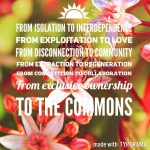
I’ve been observing the role of Mercury’s retrograde on my systems. Paying attention to my thoughts and feelings, the shifts and entrenchments. Lately I’ve been feeling a bit stuck. Or to use another metaphor, a bit ungrounded. It’s easy given the flow of information, the speed of communication, and the function of social media to feel pulled in many different directions. In addition, as a consultant, balancing the priorities of several clients at a time can often make it difficult to focus. When this happens I try to strengthen the consistency of my meditation practice and focus on my personal and professional goals to provide a guidepost for my actions.
I realized as I sat in meditation the past few mornings that my sense of purpose had been unattended to for a while. No wonder I felt scattered or ungrounded. Having a clear sense of purpose, an understanding of what I feel committed to and associated goals provides an important filter or straight line through all of the choices I face daily and helps to ground and retain focus. So I’ve been reflecting on purpose, leaning in to what is resonating for me in my conversations with colleagues and what is I am feeling called to in the movement. I’ve also been thinking about what threads together the work I am doing at IISC and my cultural work with Intelligent Mischief.
My commitment, or purpose, is to engage in transformation of myself and others towards liberation. This work aligns with what I do at IISC by supporting the self-empowerment of transformational leaders and by creating possibility for liberatory organizations that can really bring about the social transformation…that world, that speaks of, that “on a quiet day we can hear her breathing.” It also aligns with my work at Intelligent Mischief by cultivating a cultural shift that makes this transformation irresistible through the use of popular culture.
I reflected on what principles underscore this transformation for me…principles we can embody now at all levels to move us in the direction of liberation.
I see this transformation being underscored by a shift from isolation to interdependence, from exploitation to love, from extraction to regeneration & healing, from disconnection to community, from competition to collaboration, from exclusive ownership to the commons, from othering to belonging…and there are certainly many more.
These principles exist currently in practice but are overshadowed by the dominant culture especially at macro levels of society. Capitalism, our current dominant economic system, has been built on the principles that we are transitioning away from. The transformation of this system thus requires creating new systems based on the principles that we are transitioning towards. The question is, how do we expand these principles?
What can be our role at IISC in supporting leaders to develop practices that embody this transformation? In building structures that prefigure this transformation? And what is the transition in alignment with those principles that we ourselves must make as an organization?
December 19, 2017
“Innovation is as much a function of the right kind of relationships as it is of a particular kind of individual vision.”
-Carter Phipps
 The following is a slightly edited post from a couple of years ago. In many ways it feels more pertinent to me now …
The following is a slightly edited post from a couple of years ago. In many ways it feels more pertinent to me now …
Among other reads, I’ve been revisiting the book Evolutionaries by Carter Phipps. Phipps is the editor of EnlighteNext magazine and enthusiastic about what we calls “the evolutionary worldview” and how it is showing up in many different fields, from biology to sociology to philosophy and theology. He sees this perspective as transforming one’s understanding of just about everything.
“The debate about our origins is also a cultural referendum on our future.”
The book is in part retrospective, looking at the history of “the evolutionary perspective” that shook up perceptions of “a fixed world” when it suggested that creation is not static, but ever-changing. This realization is still making waves and sinking in. Phipps writes – “As the fog of fixity lifts, we are finding ourselves much more than observers and witnesses to life’s unfolding drama.” In other words, the view of an evolving world is associated with a sense of movement, possibility, engagement, and response-ability (an ability to respond). Read More
December 18, 2017
I wrote last month of my own work to take more pauses, to pay attention to my body, and to ensure that how I work is more aligned with what I do and what I care about. I started with a story of how slowing down actually allowed me to see my agitation and what was not aligned. I began to understand that not being aligned was partly external– the ways our country is out of synch with justice– and partly internal– my mind was still moving at an unrealistic pace…although my body and breath were beginning to slow.
Let’s consider how this work of aligning, and often of slowing the pace of work, might play out in social change organizations and networks.
We live in a culture that dissuades us from attending to ourselves and to our alignment. I have learned this lesson as a woman in this society that has been taught to attend to others even at my own expense, from a family that is great at doing and acting and less so at being, and as a white person raised in a white supremacy culture that values efficiency, productivity, and movement regardless of impact.
What is at danger, as change agents, if we are not attending to our internal condition and are not aligned?
Everything!
First, our relationships are at stake. We cannot truly be effective if we are operating in ways that are not healthy for ourselves or for our colleagues. When we make unrealistic promises, get too little sleep, or are short with someone because we are stressed, we are not aligning ourselves with our commitment to justice.
Second, our effectiveness is at stake. If we are working in community and not taking the adequate time to build relationship, we ignore a critical step; even if the event or work gets done, it is not truly as effective as it could be. It is not deep justice work.
Third, our ability to create impact is at stake. We teach people to create great meetings as one of the practices in our Facilitative Leadership for Social Change course. We also teach about the importance of attending to one’s interior condition. A great agenda facilitated by a person who does not hold themselves and others with love will likely fall short of its potential.
Lastly, our integrity is at stake. There is no time like the present to see that many people, especially men, in social change work have been of the belief that they could work in movements or in politics and “do good” while simultaneously abusing their power and assaulting colleagues. These are people deeply out of alignment.
As people involved in social justice work, we each owe it to ourselves, our organizations, and our movements to attend to our interior condition and work on aligning such that our values, our mindset and heartset, and our work are functioning in concert.
The simplest way I know to do this every day – and something I continue to grow in – is to take time. That can be time to talk to people and express our kindness, time to express appreciation and gratitude for what we have and what others do, and time for breathing. In a time of assaults on justice it feels counter intuitive to slow down and to breathe more. And yet, what we have been doing for years is not working. Let’s try something new.
November 27, 2017

I slept in a platform tent hearing the burbling brook, the food at the progressive retreat center was delicious and made with love, we learned life-shifting somatics exercises with wise teachers,* and I meditated each day. And yet, in the time since I left this beautiful restful setting, I have been more agitated than is my norm.
I first understood it as a principal of physics. While I slowed down physically, my cells and mental functioning continue to operate at their usual faster pace, and are hitting against a now constrained container. While I may be moving into alignment, it is not a simple shift of all systems at the same time. It will take patience to live into focused and productive energy.
Then I read a wonderful piece on creativity and connection by Elissa Sloane Perry at MAG. She helped me to understand this agitation in a metaphysical way as well. In her article, she reminds us that at a time of instability and insecurity, agitation might be a sign of alignment. She quotes Jiddhu Krishnamurti: “It’s no measure of health to be well-adjusted to a profoundly sick society.”
Today I am choosing to practice embodiment – the work of aligning myself, attending to the spiritual, intellectual, and physical manifestations of myself and my work as the interconnected sphere that it is—as an ongoing activity as the word “practice” implies. I don’t leave a retreat aligned. I choose to take steps toward alignment each day. I choose to slow down and to rest when my body reminds me I am tired. I choose to pause and think about how my actions impact others. I choose to listen better to feedback, be it from my son or a coworker. I choose to take in the emotion of a movie about liberation and not just intellectualize the political activity.
Today I recommit to aligning, knowing that does not mean that I will always feel grounded or that I am acting with my fullest purpose. I choose to acknowledge how off-kilter our world is and allow that to affect me, not just to plough on as if all is normal. I then keep trying to align internally, and to work to make the world one I want to be aligned with.
This balance is critical to our social change work; as participants and leaders in change, we need to attend both internally and externally. What are the ways you are experiencing this tension?
*Note: I highly recommend #practicingJUSTICE, a somatics (“soma: the body in its living wholeness”) retreat, sponsored by Universal Partnership and led beautifully by Rusia Mohiuddin and Reverend angel Kyodo Williams
October 12, 2017
A secret I don’t share with many people is that I have trouble reading books. When I went to law school, they made us read so many dense pages of legal reasoning I lost my love of story – until I discovered the podcast. In the comfortable confines of my car I stand witness to stories of personal accomplishment, quirks in our daily lives, and social commentary about our world. The other day one really caught my attention.
It was about Toys R Us, the biggest toy store in America. I love toys and I thought everyone else did, too. So I was surprised to learn that Toys R Us had filed for bankruptcy. Turns out, Toys R Us had invested in bricks and mortar without seriously expanding into the internet sales market. And at the same time, they kept those physical spaces disorganized, stale, and predictable. Amazon swooped in and sold toys at a record pace.
A toy and business analyst said if Toys R Us could have jumped in early and creatively into internet sales they would have avoided their decline. And if they had made their stores places of experience, fun, mystery, and discovery, they could have saved their business that way. He believed they should have created large and open areas where kids could ride around on bikes and play with other toys. He thought another miss was not thinking about how to combine physical toys with technological interactions.
As I was driving on the highway heading into traffic, I started thinking about lessons IISC or our network of clients and partners could learn from this story. Are we missing opportunities for integrating our knowledge and expertise with web-based learning and social media? Are we creating experiences in physical rooms and meetings that kick leaders and participants out of the norm and into experiences of fun, exploration, and surprise? Are we combining online and in-person strategies to more effectively and creatively share learning and ideas around collaboration, leadership, equity, and network building?
IISC is not a for-profit corporation like Toys R Us, and we have different values and approaches from them, but we can benefit from understanding that the way we do our work now and how we do our work may not be the standard for the decades to come.
IISC has started piloting some unique approaches in our workshops, in our consulting work, and through our experimentation with public engagement that use web-based learning, social media memes, and narrative. We are cooking up ways to fashion our training and consulting expertise in modular and less expensive ways so we can share it more broadly. I think that’s an early sign of us growing and stretching. We are pushing ourselves to domore experimenting and I know it’s going to help us stay relevant and live into the power of the future.
What experiments might you try out that will help you live into your future? What’s the risk of not doing so? Supporting leaders, organizations, systems, and networks to engage in social change is never out of date, but the way we as consultants and leaders approach that work might be. We may know at a gut level that something new and different is called for, but are we leaning into what’s necessary to make the leap?

Check out how Toys R Us plans to turn around: https://www.reuters.com/article/us-toysr-us-bankruptcy-brandon/toys-r-us-ceo-sees-future-with-smaller-shops-idUSKCN1BV2Y7
September 21, 2017

These days, it’s hard not to drift into apocolyptic thinking. With the fires, floods, hurricanes, earthquakes, mud slides, ongoing flirtation with nuclear war, rising visibility of virulent white supremacy, ending of DACA, daily dismantling of federal level protections of civil rights and the environment, and the list goes on, it’s easy to despair. I keep saying to myself and my colleagues that a strong spiritual core is the only thing that keeps me moving! That, and the reality that it’s actually possible to make some progress within my sphere of control.
I’m reminded of two poems …
I am only one
But still I am one.
I cannot do everything
But still I can do something.
And because I cannot do everything
I will not refuse to do the something that I can do.
— Edward Everett Hale (1822-1909) Unitarian Universalist minister
And this word of caution from A Ritual to Read to One Another by William Stafford
… For it is important that awake people be awake,
or a breaking line may discourage them back to sleep;
the signals we give — yes or no, or maybe —
should be clear: the darkness around us is deep.
In spite of the times, I hope you are looking for and encouraged by the acts of resistance, reform, recreating and reimagining that are all around us. There is much we can do to advance justice and sustainability, even in these trying times. Think carefully. Love fully. Work together. Practice community care. While each of us is only one, together, we are the ones we’ve been waiting for.





